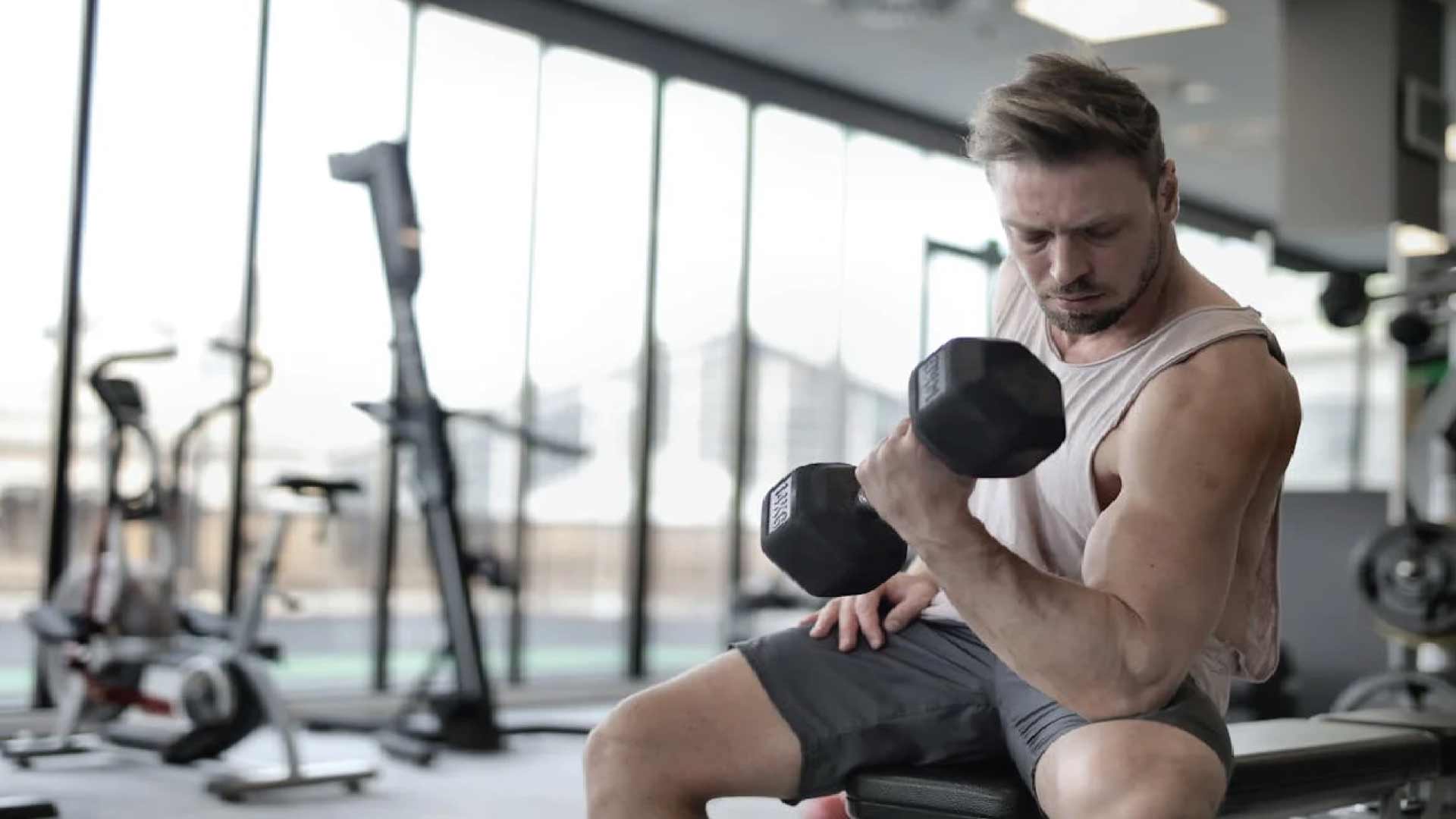In the realm of strength training, the triceps often take a backseat to more glamorous muscles like the biceps or chest. However, neglecting your triceps means missing out on a significant portion of your upper body strength potential. That’s where dumbbell workouts come into play. In this comprehensive guide, we’ll delve into the specifics of dumbbell exercises tailored specifically to target and sculpt your triceps.
Understanding Triceps Anatomy
Before diving into the workouts, let’s briefly explore the anatomy of the triceps. Comprising three heads hence the name, this muscle group is crucial for elbow extension and overall arm stability. The lateral, long, and medial heads collectively form the triceps brachii, spanning the upper arm. Each head plays a distinct role in arm movement, making it essential to target all three for optimal development.
The Benefits of Dumbbell Workouts

Versatility and Convenience
One of the primary advantages of dumbbell workouts is their versatility. Unlike machines that lock you into specific movements, dumbbells allow for a wide range of motion, enabling you to engage stabilizing muscles and promote balanced development. Moreover, dumbbells are relatively inexpensive and space-efficient, making them ideal for home gyms or limited workout spaces.
Targeted Muscle Engagement
When it comes to isolating the triceps, few tools rival the effectiveness of dumbbells. By performing exercises like dumbbell tricep extensions or dumbbell kickbacks, you can precisely target each head of the triceps, ensuring comprehensive muscle activation and growth. This targeted approach is especially beneficial for individuals seeking to address muscle imbalances or enhance athletic performance.
Progressive Overload
Whether you’re a novice or seasoned lifter, progressive overload is key to continuous gains. Dumbbells offer a straightforward means of increasing resistance, allowing you to progressively challenge your muscles over time. Whether you opt for heavier weights or incorporate advanced variations, dumbbell exercises provide ample room for progression, keeping your workouts engaging and effective.
Essential Dumbbell Exercises for Triceps Development
Dumbbell Tricep Extensions
Technique:
- Sit on a bench with a dumbbell held overhead, arms fully extended.
- Lower the weight behind your head by bending at the elbows.
- Keep your upper arms stationary and elbows close to your head.
- Extend your arms, returning to the starting position.
- Repeat for the desired number of reps.
Dumbbell Kickbacks
Technique:
- Stand with a dumbbell in each hand, palms facing inward.
- Bend your knees slightly and hinge forward at the hips.
- Keeping your back straight, extend your arms backward, squeezing your triceps.
- Hold for a moment, then return to the starting position.
- Repeat for the desired number of reps.
Dumbbell Skull Crushers
Technique:
- Lie on a bench with a dumbbell in each hand, arms extended over your chest.
- Bend your elbows, lowering the weights towards your temples.
- Keep your upper arms stationary and elbows pointed towards the ceiling.
- Extend your arms, returning to the starting position.
- Repeat for the desired number of reps.
Crafting a Dumbbell Workout Routine
To maximize your triceps gains, incorporate the following workout routine into your training regimen:
- Dumbbell Tricep Extensions: 3 sets x 10-12 reps
- Dumbbell Kickbacks: 3 sets x 10-12 reps
- Dumbbell Skull Crushers: 3 sets x 10-12 reps
Perform this routine 2-3 times per week, allowing for adequate rest and recovery between sessions. As you progress, gradually increase the weight or reps to continue challenging your muscles and spur growth.
In conclusion, dumbbell workouts offer a potent arsenal for sculpting stronger, more defined triceps. By leveraging the versatility and effectiveness of dumbbell exercises, you can target each head of the triceps with precision, fostering balanced development and functional strength. Incorporate the recommended exercises and workout routine into your training regimen to unlock the full potential of your triceps and elevate your overall fitness journey.
FAQs:
What are the benefits of incorporating dumbbell workouts into my fitness routine?
Dumbbell workouts offer numerous benefits, including increased muscle strength, improved muscular endurance, enhanced balance and stability, and greater flexibility. Additionally, dumbbells allow for versatile exercises targeting various muscle groups, promoting overall functional fitness and reducing the risk of injury.
Can dumbbell workouts help me lose weight?
Yes, incorporating dumbbell workouts into your fitness routine can aid in weight loss. By engaging multiple muscle groups simultaneously, dumbbell exercises elevate your heart rate, leading to calorie burn and fat loss. Furthermore, building lean muscle mass through resistance training boosts metabolism, contributing to long-term weight management.
Are dumbbell workouts suitable for beginners?
Absolutely! Dumbbell workouts are beginner friendly due to their simplicity and versatility. Start with lighter weights to master proper form and technique, gradually increasing resistance as you gain strength and confidence. Focus on fundamental exercises like squats, lunges, and presses to build a solid foundation before progressing to more advanced movements.
How often should I perform dumbbell workouts?
The frequency of dumbbell workouts depends on your fitness goals and recovery capacity. For beginners, aim for 2-3 sessions per week, allowing at least one day of rest between workouts to facilitate muscle repair and growth. Advanced lifters may train 4-6 times weekly, incorporating split routines to target specific muscle groups while ensuring adequate rest.
Can I do dumbbell workouts at home?
Yes, one of the advantages of dumbbell workouts is their suitability for home exercise. All you need is a set of dumbbells and minimal space to perform a variety of effective exercises. Invest in adjustable dumbbells for versatility, and follow online tutorials or workout plans to structure your at home dumbbell workouts for optimal results.


